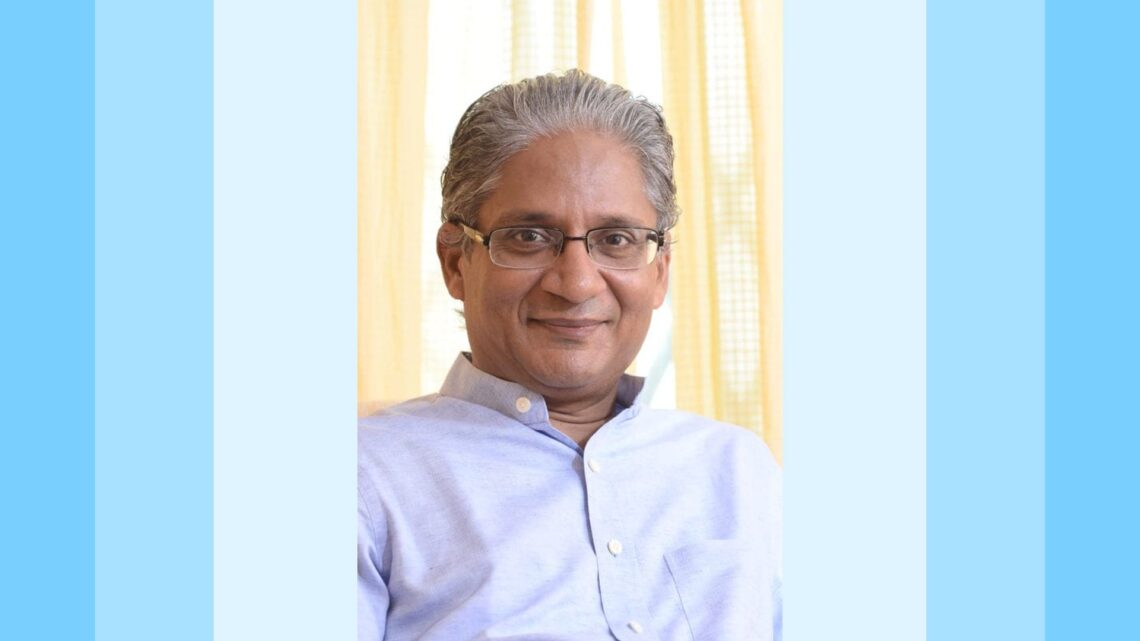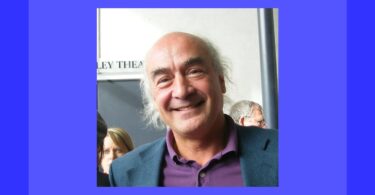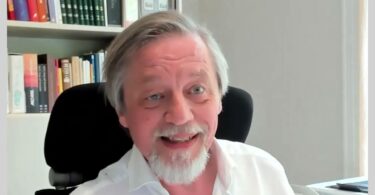Baltimore, June 27, 2019. Recently, during my visit to Mumbai, India, I was invited to a tour of The Other Song Academy. ‘Well, it is an institute of higher learning for homeopaths… how is it going to be different from other similar institutions I have seen?’ This curiosity ensured that I will bravely endure the terrifying peak hour traffic in the bustling metropolitan city of Mumbai and appear exactly on time, knocking at Dr. Meghna Shah’s office door. Dr. Meghna turned out to be a very graceful hostess. She took me around the whole building, all levels, all consulting rooms and facilities, including a classroom full of students with a video training session in progress and introduced me to everyone present. While the general state of cheerfulness permeating the facility made a unique impression on me, I was also taken aback by the unusual name of the rooms. Instead of being identified by room numbers on the door, each room was named after, what I readily recognized as, musical notes from the Indian classical music. Well, right there, that is the BIG difference…The Other Song Academy is unlike any other institution of higher learning that you or I have seen so far. It does have something to do with music! But what?
The opportunity to find out presented itself when I found that Dr. Rajan Sankaran would be in Baltimore as a speaker at the Joint American Homeopathy Conference. I requested an appointment to interview him which was readily granted and the next instance, I was all set with my travel preparations.
I was to go to the interview straight from the airport. Experiencing the absolute monotony and the mind-numbing effect of Washington DC and Baltimore traffic for over two hours made me a bit more appreciative of Mumbai traffic that I had experienced on my way to The Other Song Academy. In being chaotic, diverse, loud, hectic and full of life, Mumbai traffic is somehow bursting with intense human energy! It had helped me tune out and connect with a state of inner silence. Here in Baltimore, before the interview, stuck in a very slow and very boring traffic, I called ahead and informed Dr. Sankaran about the possibility of me being late….and very sweetly, he said “No problem.” That was very comforting indeed. I had anticipated this interview with much enthusiasm and now Dr. Sankaran was just about to answer my questions.
VS: Please tell me about the very unique naming system that you have followed in The Other Song Academy. The rooms are named after musical notes and not numbers. How so?
Dr. RS: The idea behind The Other Song Academy is that different practitioners of homeopathy would come together. Each practitioner follows his own style but together the practice would be melodious. The conference room is named sargam (octave) and the consulting rooms are named after each note of music, one room is named taal (beat). Just as each musical note contributes to making of music, each style of homeopathy and each practitioner contributes to success of homeopathy. In this regard, The Other Song Academy brings different styles of homeopathy and healing together under one roof.
VS: That makes sense, but how would you connect homeopathy with music for a regular person who has no idea of either?
Dr. RS: It is very well known that music has healing potential. Music therapy is widely practiced worldwide. Music does have so many melodies. Which melody is suitable for healing an individual? To be effective as a healing modality, music has to be specific to an individual. It cannot be one size fits all. Different music affects different people and so, definitely, there is individuality. When we extrapolate this idea, the question that comes up is, if there is a music similar to your own state, can it heal you? With this question in mind, I proceeded to prove the ragas on healthy people and establish what each raga is able to elicit in an individual when he listens to a raga for a specific purpose. It is like when a prover takes a remedy, he opens a door to the expression of the remedy. Similarly, in proving ragas, I conducted experiments involving 40-50 people and documented the effect of raga on them. The outcome of such experimentation helped me conclude that a raga produces a certain effect. When there is a patient with an innate state similar to this effect, then he will benefit from listening to the raga. It is based on the homeopathic principle, ‘like cures like.’
I began this work over twenty years ago. My book, Substance of Homeopathy (1) mentions proving of ragas. And I had also published a paper on this subject way back in 2011 (2). The next question I asked myself was, if a raga produces a specific state, can it be related to a remedy state? I could identify similarities between effects from raga and effects from groups of remedies. To experience these effects a person need not necessarily know about ragas or homeopathy… the effects are purely experiential.
VS: To make a raga prescription, does the homeopath have to have a great command of Indian classical music?
Dr. RS: No. Not at all. I have already done work in twenty-five ragas. There are twenty-five more to go. The effect of all these ragas will be documented. The homeopaths can choose the raga to be prescribed from this compendium.
VS: So, the sound energy of the ragas will not be turned into homeopathic remedies?
Dr. RS: My suggestion is to prescribe a specific raga that matches the state of an individual and have him or her listen to the raga and experience its effect. We do provings of potencies prepared from various medicinal substances. Many medicinal substances are toxic in their original state. Dilution and potentization removes toxicity and brings out the healing potential. Music ragas, in their original state, are not toxic – they elicit a certain healing effect when they are heard. So, I do not yet see the need for turning the sound energies of ragas into homeopathic remedies. They are good as they are. Hahnemann had discovered that dilution and potentization releases the energetic effect of the remedy and it becomes dynamic (non-material). Music is inherently dynamic (non-material). Conversion of music into a pill is not necessary because it does not have toxicity. It already exists in dynamic, energy form. Just hearing music is a better idea.
VS: Where can a person find the ragas?
Dr. RS: The Other Song Academy (3) will provide CD’s of the proven ragas. Various artists render the ragas in different styles and the effect can be different. Instead of choosing from the internet, when the person hears our CD he gets to hear specific ragas that have been meticulously proven.
VS: How is the healing effect of ragas different from the healing effects of mantras? Mantras are in Sanskrit language, they have deep meanings and they serve a specific purpose. Can mantras be prescribed just like ragas?
Dr. RS: This is an interesting question, but there is a fundamental difference between ragas and mantras. Mantras, in some sense, are universal. There is nothing like one mantra for one person and another for the next. Mantras do have healing effect because they do cross the limit of individuality and elicit a universal healing effect. What crosses the limit of the individual? It is the spirit. Mantras have a spiritual effect. Mantras address the spiritual process of transcending individuality. The spiritual effect of the mantras is undifferentiated, non-specific and they address the illness common to the entire humanity – which is identifying oneself as individual body -mind. Mantras help transcend this limit and connect with the universal spirit.
Ragas, or melodies of the Indian classical music, are wordless, pure sounds. Unlike mantras, ragas on the other hand, have an individual effect. This means that ragas address the innate pattern of the individual. That is why different melodies or ragas match different states of people. Ragas help heal our individual patterns of expressing disease states and in this task, they are better suited than mantras. One aspect of the ragas is that they allow the mind to become silent and meditative. It can be an entry point to meditation. When raga is rendered in a melodious style, then, like a headphone canceling out external noises, ragas cancel out all the chatter and noises and allows the mind to get focused. Mantras do the same too, bring mind to a focal point and allow it to go into a meditative state.
Apart from ragas, music has other aspects too. One aspect of music is that it can bring a community together. Group singing of bhajans, choirs etc. are an example. Group singing is done all over the world, in all cultures. It brings people together, helps dissolve the individual identities and help people connect with the group identity. Another great aspect of music is rhythm. It is used in group drumming when a large number of people can come together and get beyond the individual identities. They can become one with the rhythm.
Movement – communal dance – serves the same purpose. By moving to individual rhythm, one can connect with the universe. In our experiment, we found that rhythm is the common connecting thread between people and universe. Everything has a rhythm…waves of the ocean, trot of a horse, beat of a heart, revolution of the earth, cycles and seasons, day and night, flapping of a bird’s wings, the angular movement of fish – all of these and everything else in nature is rhythmic. When we play a specific beat, ask people to shut their eyes and move to the rhythm, they shape shift into anything! They become a horse, a cloud, a flower, a wave….rhythm can be common to them and to something in nature. They experience unification with the universe through rhythm and they feel oneness with all creation. The spectrum of music is very large. We can specifically use music ragas for healing of individual patterns and identities. Along with movement, art, and meditation, we are offering music as a tool of healing at our retreat center (4).
VS: Just as remedies with a matching state help individuals heal, ragas with a matching state help with healing.
Dr. RS: Yes, music has this potential. Earlier, I had observed a connection between ragas and a few groups of homeopathic remedies. I postulated that the patient could take the remedy and listen to the raga to enhance the effect of the remedy. For example, a patient on Aurum Metallicum could listen to Rag Darbari. People on Natrum muriaticum could hear Rag Bhairavi. What is interesting is that, from the late 40s to 90s, all songs in the India movies were based on ragas. Now times have changed and Bollywood music is quite removed from the ragas. But back then, lyrics were written and presented to the music directors who were highly accomplished in classical Indian music. They chose the ragas according to the lyrics and situation in the movie. For example, the raga for disappointment in love is Bhairavi. And pangs of separation are best expressed by rag Yaman. What I do wish to emphasize here is that, in the era of golden melodies, the music directors instinctively, intuitively chose ragas that were best suited to a specific emotional state. You can say, Indian people know the association between ragas and their effects. But we proved Rag Yaman in five continents, and the effect was the same – it elicited the feelings of separation from the beloved. There was no bias. What the music directors knew instinctively, we are discovering in our proving experiments.
VS: At what level of an individual does music cause its healing effect?
Dr. RS: There are five levels of consciousness.
- This is the most superficial level, and is based on the current situations.
- Memory of past history. Exploring emotions leads us from now, to the past when a similar situation must have occurred.
- Imaginary level of human consciousness. Exploring the memory of past history leads to a person’s recollection of events that might have never happened to him in this lifetime, but are part of collective human consciousness.
- Memory of all creation. Exploring collective human consciousness leads to memory of all creation, not just human, and we come to relating the patient’s experience and pattern with plants and animals. Homeopathy works at this level of consciousness which is a lot deeper than the other three levels mentioned above.
- Memory of the energy pattern. The fifth level is even deeper than the 4th level. In all creation we can see manifestation of energy patterns that are non-material, non-substance. This energy pattern could run with equal ease through plants, minerals and animals. This energy pattern is beyond homeopathy. This is the level of consciousness at which music creates its effect. Music goes to the very core of human, non-material, non-substance energy pattern. Ragas have energy patterns that can match any substance and state found in nature. When chosen correctly and when it matches the energy state of a person, music goes to the core of his consciousness.
VS: What about music that is common these days, full of foul words, curse words, and full of negative emotions? This is what the youth is exposed to nowadays.
Dr. RS: When words are used, music affects at level 1, the level of emotions. Pop music appeals to emotions. That is okay too. Every level of healing is okay. People do need different levels of healing at different times in their lives. But music without words, pure ragas, are melodic patterns without words and they do not appeal to the mind. They have no meaning. Instrumental music – without words, has no meaning. It is pure expression of energy. In classical music raga rendition, some syllables are repeated in a sequence, and they sound like words, but these words are meaningless too. They are just there to hang the melodies on. But simply, this energy pattern has a healing quality to it.
I am convinced that music can heal at a level deeper than homeopathy. But the problem is how to channel this healing? Homeopathy has over 250 years’ worth of accumulated literature, we have materia medicas and repertories. But the healing effects of music are not documented like homeopathy. What are the specific effects of the ragas, how to match the effect of ragas with the state a person is in? These are the challenges even though we have proved that ragas do effect deeply and symptoms are elicited at all levels – emotions, physical, generals, dreams, imaginations, thermals, movements. We are at a stage of compiling this information.
The beauty of application of ragas for healing is that every healer of any affiliation, not just homeopaths, can use the ragas for healing their patients, even those who do not know music and homeopathy. As long as they can match the energy pattern / state of a person with the energy pattern of the raga, they can make a successful prescription. And even without using the word homeopathy, we can use the energy pattern of music according to the most fundamental principle laid out in homeopathy, “like cures like”.
Postscript:
Dr. Rajan Sankaran wrapped up the interview on a high and hopeful note. As homeopaths, we are in the business of exploring and expanding our frontiers. We are light years ahead of the mechanistic medicine that goes by the idea that the body is the sum total of all its parts. We routinely deal with the energy pattern expressed by our patients and find a remedy that is prepared from a natural substance that expresses a similar energy pattern. Dr. Sankaran has further expanded our frontier by suggesting that based on the principle of “Like cures like”, we can use the ragas of classical Indian music and help our patients without any intervention except having them engage meditatively, spiritually, and wordlessly, with the energy contained and expressed in the raga that best matches their own energy pattern. Moreover, the ragas do not even have to be turned into homeopathic pills – because, as pure sound energy, the ragas do not have any toxicity that must be diluted and potentized to remove toxicity. Ragas are already dynamic and ready to help ailing individuals by elevating the level of their consciousness to a state of universal oneness. This work from Dr. Sankaran takes healing to a completely different level and turns it from ‘relief and cure from disease’ to a spiritual experience of living, suffering and becoming free from suffering – the highest ideal of life itself. It is much to look forward to and certainly, as homeopaths we are ready for it.
References:
(1) The substance of homeopathy, Rajan Sankaran, Homeopathic Medical Publishers, 1999.
(2) Homeopathic healing with music, The Oxford handbook of medical ethnomusicology, 2011.






I am not convinced about the treating expertise of Dr. Shankaran. I live in Mumbai. He treated me for 6months – but I was so disappointed that even after 6 months I did not have an iota of improvement. In fact I felt worst. It used to surprise me that during each monthly follow up Dr. Shankaran would ask no questions. Only listen to me if I said any thing – HIS FINAL REMARK WOULD BE – ” WE WILL HELP YOU”.
What choice I had. I bid BYE.
It is not surprising
I was always little sceptical about his methods and theories.